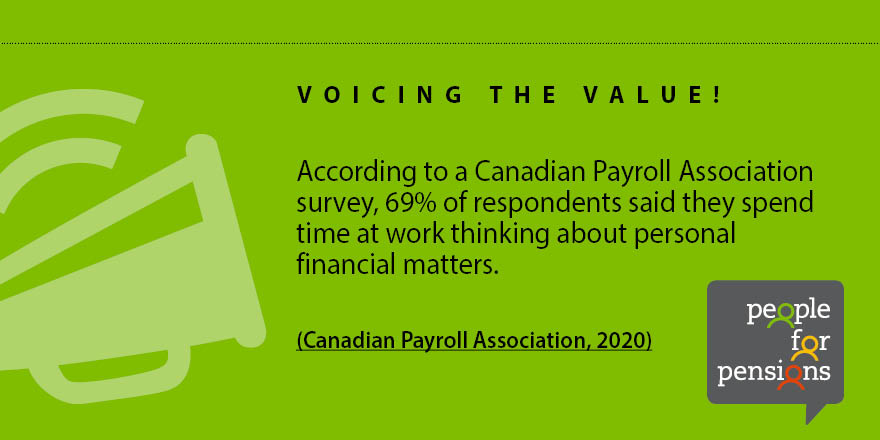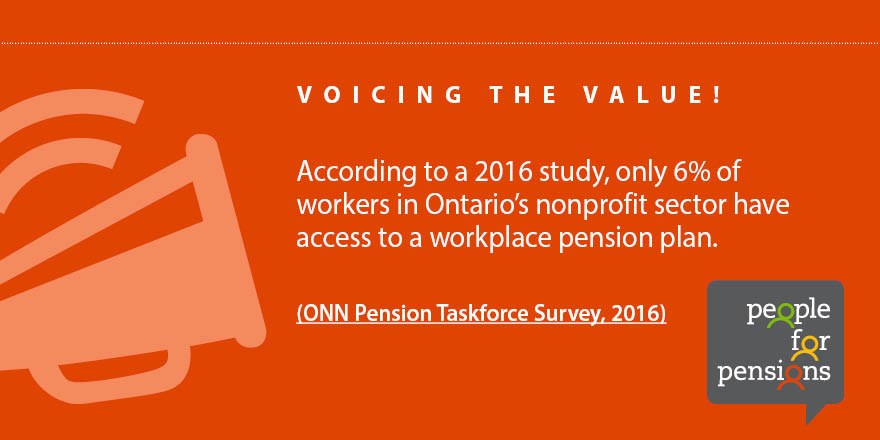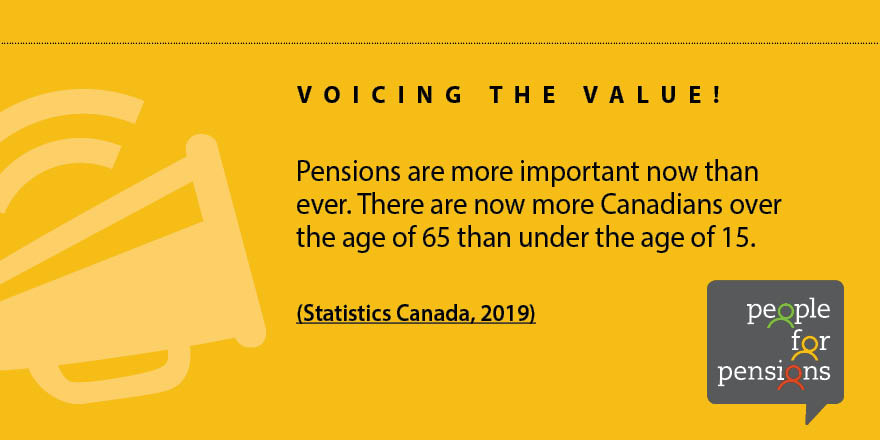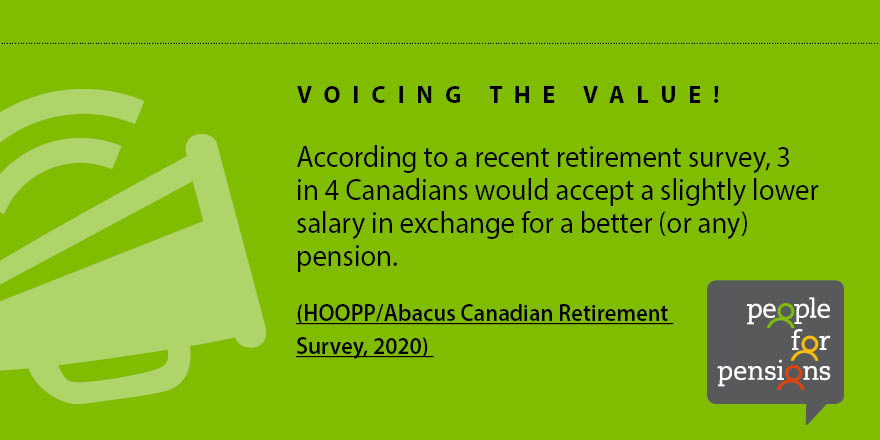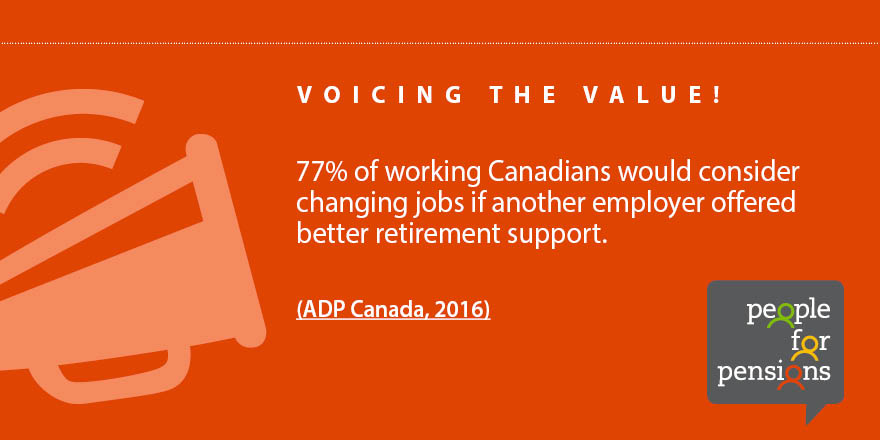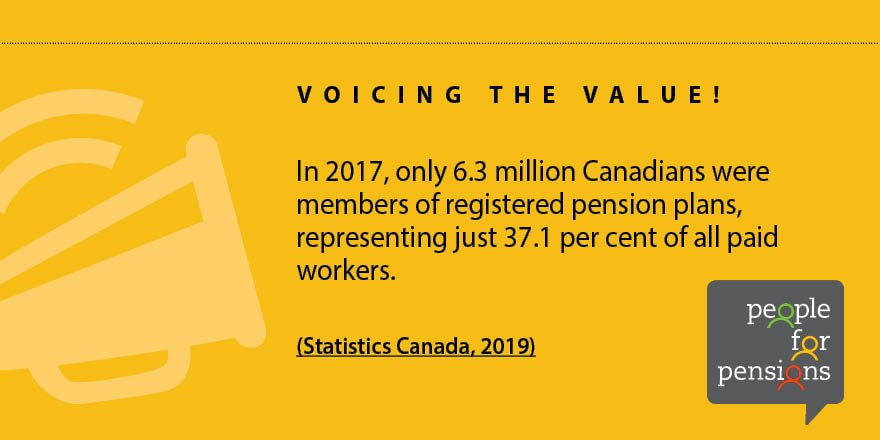Defined Benefit Facts and Pensions 101
Understanding your sources of retirement income:
There are three main sources of retirement income that Canadians rely on for security in retirement. We encourage you to explore the key terms in each source to learn more.
Government programs
- Most workers employed by an employer in Canada contribute to either the Canada Pension Plan (CPP) or the Quebec Pension Plan (QPP). Contributions are based on income and employers pay half the required contributions. The retirement age to collect CPP/QPP is 65, although you can choose to receive a reduced pension as early as age 60. Conversely, if you choose to wait until after age 65 to collect your CPP/QPP, your pension payments will be higher.
- Many DB pension plans are integrated with CPP/QPP. This means members make lower contributions to their DB plan up to the annual CPP/QPP limits and the pension they receive at age 65 is reduced to reflect the fact that members are entitled to receive unreduced CPP/QPP benefits at that age. If they retire before age 65, they will notice the pension amount they receive from their DB plan after age 65 is lower than before age 65. That is because at age 65 they are eligible to start the CPP/QPP pension on an unreduced basis.
- For more information about the CPP, click here.
- For more information about the QPP, click here.
- The Old Age Security benefit, or OAS, is a monthly pension you can receive if you're age 65 or older. The amount someone receives will depend on how long they lived in Canada or other specific countries after the age of 18. OAS payments are taxable. It is not based on employment history.
- Once someone's earnings in retirement pass a certain threshold, they may be required to pay back all, or part, of their OAS pension.
- For more information about the OAS pension, click here.
- The Guaranteed Income Supplement, or GIS, is a supplement to the Old Age Security benefit that low-income seniors may quality to receive. People who qualify must have incomes below specified levels. GIS income is not taxable.
- According to research from Boston Consulting Group released in 2013, an estimated 10-15% of DB plan retirees receive the GIS compared to 45-50% of other retirees.
- For more information about the GIS, click here.
Employer-sponsored pension plans
- A defined benefit, or DB, pension plan seeks to ensure that a retiree will receive secure, predictable income in retirement.
- The main feature of a DB pension is that it's calculated based on a formula. Members know how much pension income they will receive each month for as long as they live. That way they can plan for their retirement.
- With a DB pension, members don't have to worry that they will outlive their pensions. Further, some DB pension plans include annual inflation adjustments.
- Unlike retirement savings in individual accounts that can be directly impacted by ups and downs in the stock market, DB plans use a set formula to calculate pensions.
- DB plans are managed by investment professionals and the management fees are typically less expensive than most other models. A DB model pools the contributions from thousands of people, meaning the costs are shared widely.
- In a defined contribution, or DC, pension plan, employees and employers typically both contribute to the employee's pension plan and pension contributions are deposited into an individual account for the employee, who is then usually responsible for their own investment decisions.
- The main differences between DB and DC plans are:
- Members of DC plans must guess how long they will live in order to make sure their savings last – or purchase an annuity from a life insurance company, which can be very expensive. In a DB plan, on the other hand, benefits are guaranteed for life.
- In a DC plan, the employee assumes the investment risk. Market fluctuations can have a bigger impact on retirement income in a DC plan than a DB plan and therefore DC plans don't offer the same level of income predictability. A DB plan, on the other hand, bases benefits on a formula so individual members' benefits are not impacted by changes in the market.
- Under a DC pension model, fees can be passed on to plan members, which can have a significant financial impact on members' account balances.
- In most cases, the intention of DC plans is to help an employee save for retirement, rather than providing income in retirement.
Note: In addition to employer-sponsored pension plans, many employers may offer other types of Capital Accumulation Plans (CAPs) including Group Registered Retirement Savings Plans and Group Tax Free Savings Accounts. In general, CAPs have features similar to those outlined above for DC plans, which also fall into the CAP category.
Personal savings
- The federal government established Registered Retirement Savings Plans, or RRSPs, to encourage Canadians to put aside personal savings for their future retirement.
- The main incentive to set up an RRSP account is that contributions are tax deductible. Canadians don't pay taxes on their RRSPs until the money is withdrawn.
- If you are a member of a registered pension plan (DB or DC) this will reduce the amount you can contribute to an RRSP. The reason for this is that the Canada Revenue Agency (CRA) imposes limits on the amount of money that Canadians can save for retirement on a tax-deferred basis. All Canadians, whether they belong to a pension plan or save for retirement through an RRSP, are subject to the same limits.
- For more information about RRSPs, click here.
- While not specifically designed for retirement, Tax Free Savings Accounts, or TFSAs, were introduced in 2009 to help Canadians save money tax-free.
- Contributions to TFSAs are not deductible for income tax purposes and savings/eligible investments made within a TFSA can grow tax free.
- You can withdraw money from a TFSA at any time and withdrawals are tax free.
- TFSAs are commonly used to save for short-term goals or after someone has maximized their RRSP contributions.
- TFSAs can also be used as a vehicle in retirement to deposit surplus income from a pension plan or a retirement income fund.
- An annual contribution limit for the TFSA is set each year and unused room is carried forward. Further, if someone withdraws from their TFSA, the amount will be added back into their contribution room the following year.
- For more information about TFSAs, click here.
Did you know?
